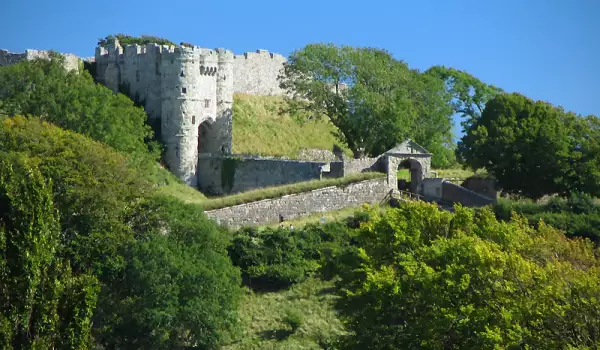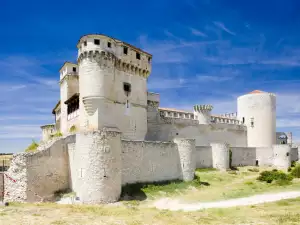Carisbrooke Castle

Carisbrooke Castle represents the heart of the Isle of Wight and is located quite close to town of Newport. Carisbrooke is another excellent example of an early medieval castle in the UK, as today it’s brilliant military architecture stands on a small hill dominating a village.
It is assumed that the fort site today of Carisbrooke Castle was present even during the Roman times, sometime before the 7th century to the end of the Great Roman Empire. Then the area was conquered by the Saxons, who ruled the fortress for around 8 centuries. During the 10th century the firewall of castle Carisbrooke was erected on the edge of the hill to provide protection from the raids of the Vikings at the time.

The massive fortress of Carisbrooke appeared in the 11th century and was a polygonal structure of the fort. The main building beyond the walls appeared in the second half of the 12th century. At about the same time the firewalls built of stone where built and the watchtowers in the south and southwest of Carisbrooke castle were also constructed. From the west side of the entire complex the entrance gate was built. It is surrounded by two massive towers and the movable vertical grid of the fortress can still be seen.
This entrance portal was built somewhere between the 14th and 15th century, replacing the earlier build by the original owners of Carisbrooke - Redvers family of whom owned the palace for more than 200 years until it was sold to Edward I.
Today at Carisbrooke you can still see the two original medieval well. Much of the premises of Carisbrooke were built mainly during the 13th century, including the Great Hall with its impressive fireplace. However, all the owners of Carisbrooke Castle over the centuries have taken reconstructions and today it is pretty easy to identify which part of the castle was erected during which period.
One of the remarkable parts of the castle Carisbrooke was restored in the style of the 13th century, it was the chapel which was commissioned by Countess Isabella. Although marked by irreparable damage from the weather, the beauty and splendor of this beautiful chapel is still evident and today you can see the original design of Isabella. Over the past century the chapel was finally restored in honor of King Charles I, of whom lied locked in the caslte for over one year before his judicial process began.















